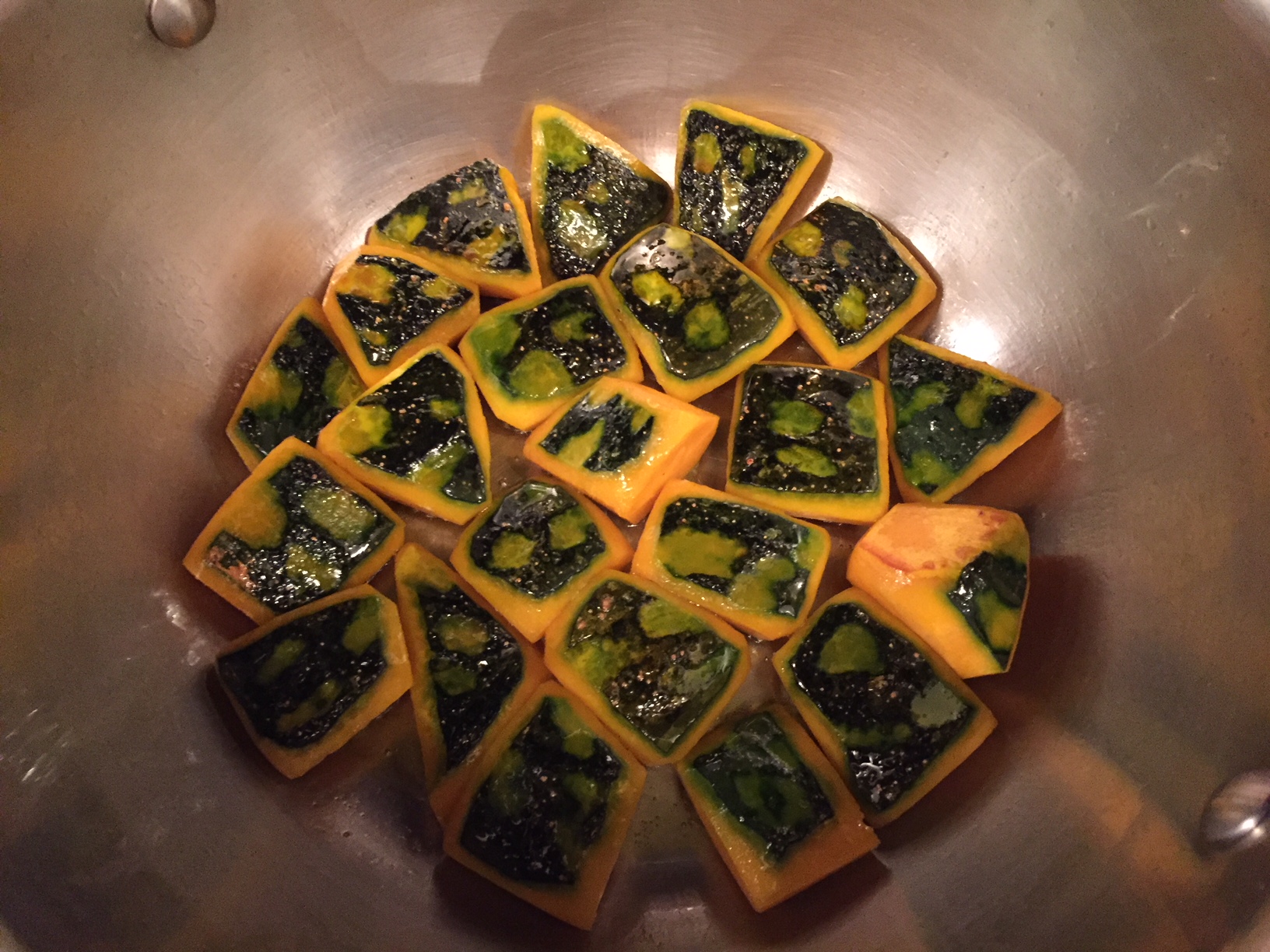 After the harvest when kabocha is stored properly it remains fresh and delicious for the next 2 to 4 months. In order to survive this long kabocha is protected by a hard, green skin. Attacking it raw with a dull knife can cause you injury. The best way to soften it is to heat it in the oven. First rinse the kabocha thoroughly under tap water and clean with a hard scrub brush. The attractive green skin is quite edible so it should be clean. The skin becomes tender when it is cooked unlike the other squash varieties.
After the harvest when kabocha is stored properly it remains fresh and delicious for the next 2 to 4 months. In order to survive this long kabocha is protected by a hard, green skin. Attacking it raw with a dull knife can cause you injury. The best way to soften it is to heat it in the oven. First rinse the kabocha thoroughly under tap water and clean with a hard scrub brush. The attractive green skin is quite edible so it should be clean. The skin becomes tender when it is cooked unlike the other squash varieties.
Turn the oven to 400°F. Wrap the kabocha in aluminum foil and cook it whole for about 40-50 minutes. Remove the kabocha from the oven. After cooling it a while carve out and remove the little remaining stem part in the center on top of the squash. Then, cut the kabocha into evenly into halves with a sharp knife. Remove the seeds with a spoon. It is now ready for you to make several different dishes.
Quick to enjoy: Cut the kabocha into 1-inch thick wedges. Cook them in an olive oil-coated skillet with sprinkles of sea salt until the bottom of each piece is lightly golden. Turn it over and cook the other side is golden. The flesh is creamy-tender and salt brings the sweetness of Kabocha to the highest point. You may bake it in the oven, if you wish.
For a kabocha soup: Remove the skin so that the soup is an attractive orange color; cut up the flesh into chunks and cook them with cut up onion or leek in water or kelp stock until they are tender; Process them with the cooking liquid in a blender until smooth; Season the soup with sea salt or mellow-sweet miso. You can find an excellent recipe in Hiroko’s American Kitchen .
For simmering kabocha: Cut up kabocha into bite sized pieces; in an lightly oiled cooking pot brown the Kabocha pieces on every side; add dashi stock or vegetable stock, and cook the pieces until tender. Flavor the Kabocha with shoyu. If you need additional sweetness add mirin or maple syrup. Kabocha has natural sweetness, so you can usually omit the sweetener. If you have some sesame oil in your pantry, add a splash of it. You will find this recipe in The Japanese Kitchen.
